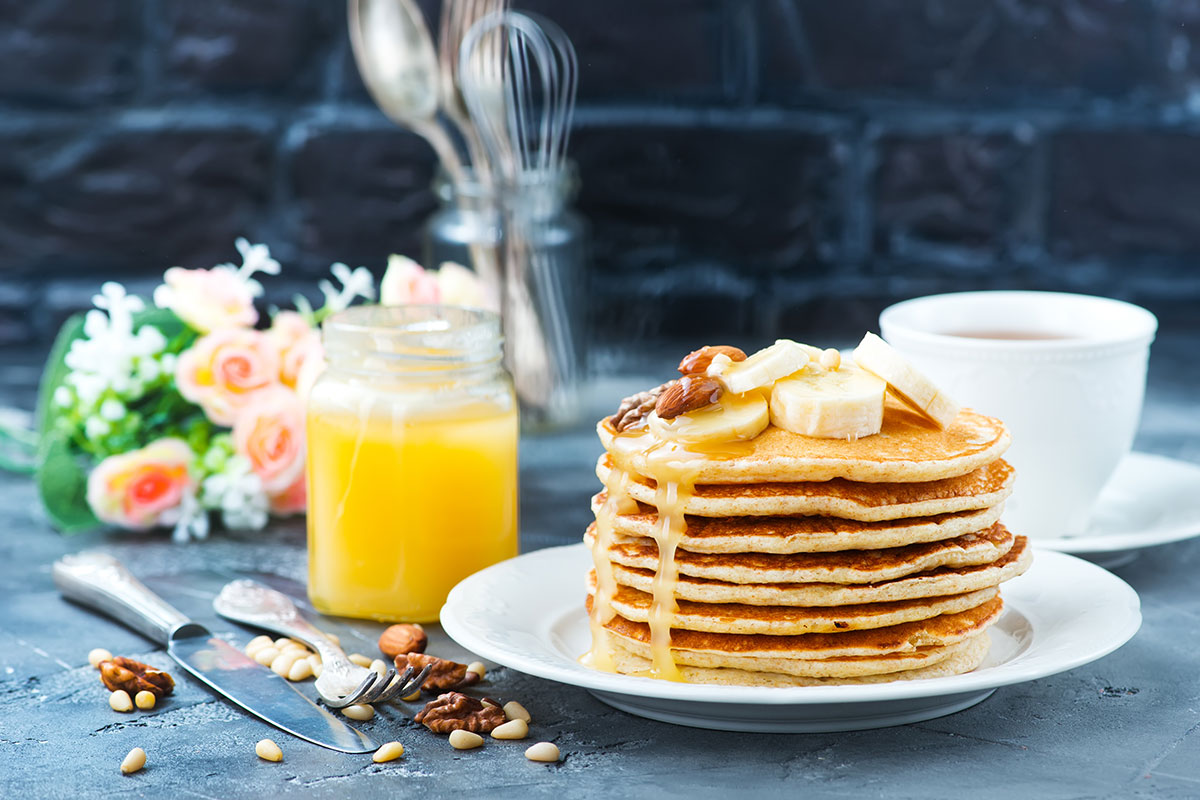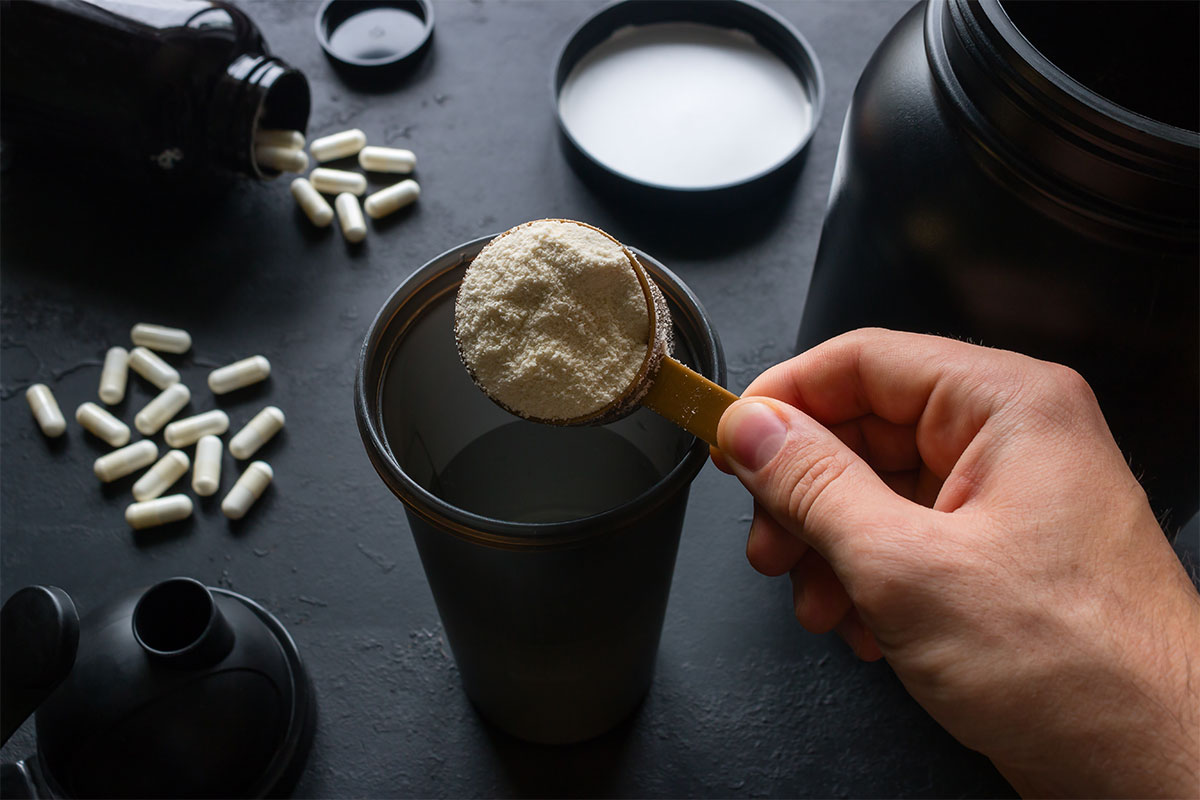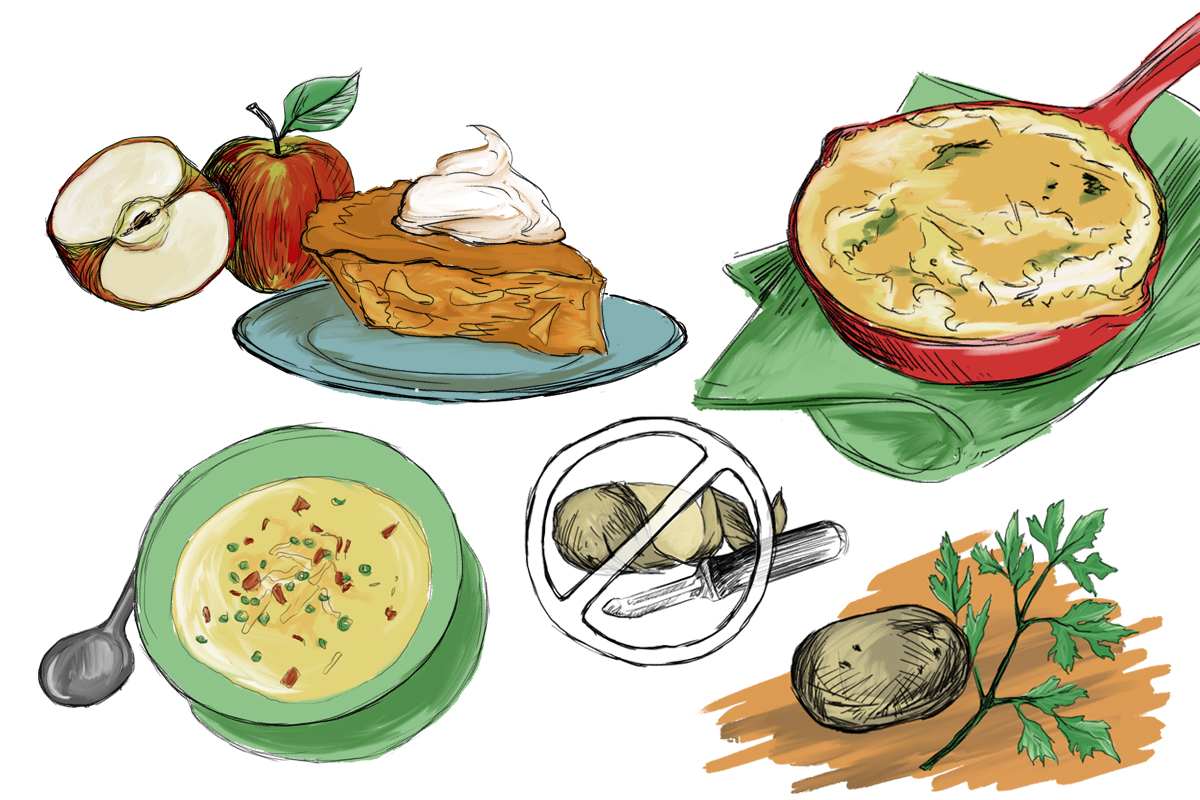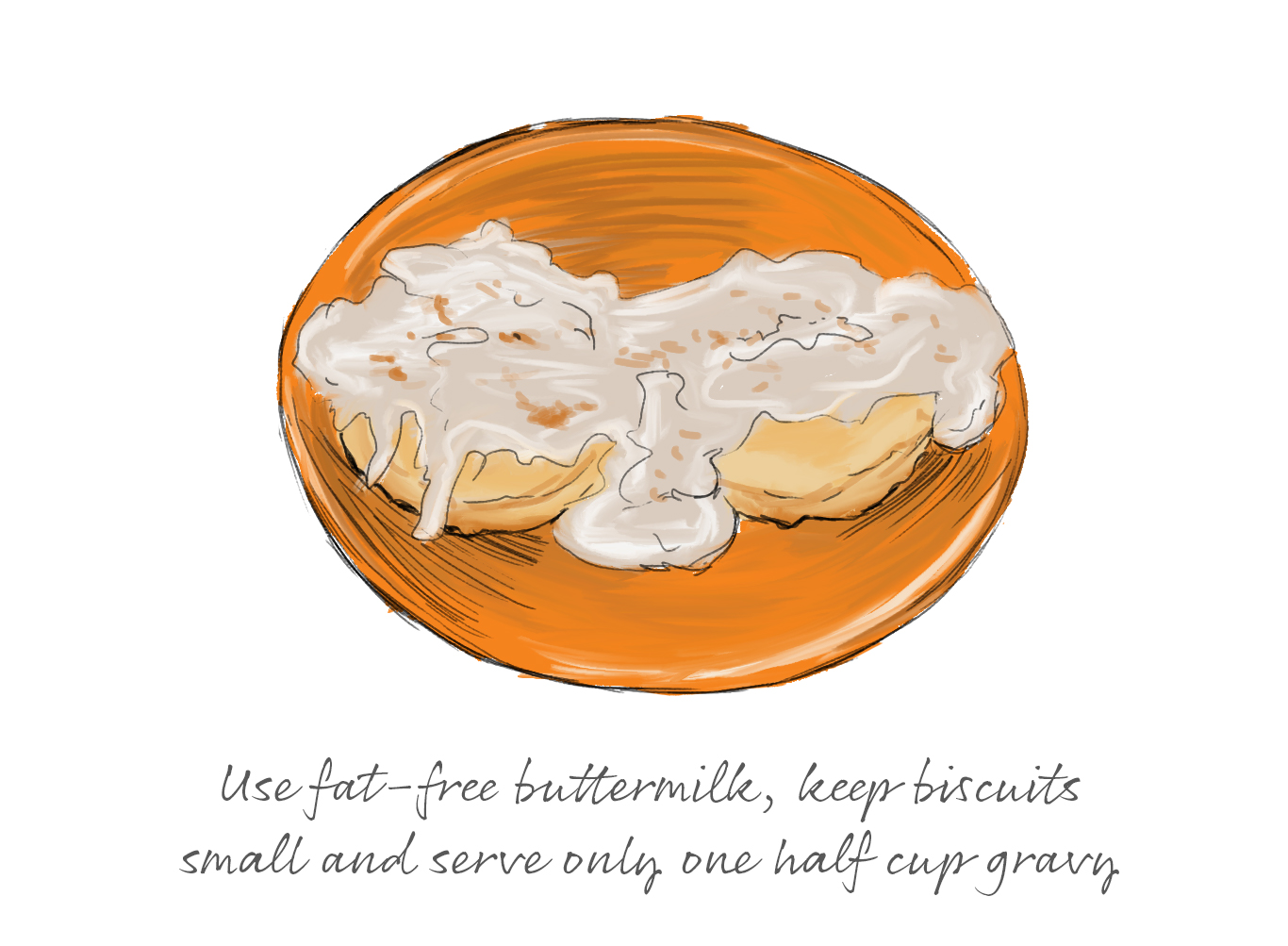Salt Grains for Muscle Gains?
Does liberally salting your food help you pump more iron in the gym? Registered Dietitian, Debbie James, investigates the claims!


I have a goal of losing weight from 135 lbs. to 120 lbs. I am 17 years old and I go to LA Fitness every day. According to my calorie tracker, I eat 1,200 calories every day and burn 450. Can you please give me some healthy tips so I can lose weight faster? Because I am not seeing the changes I want to see.
– Rimsha M.

At 17 years of age, you need plenty of energy (even if you’re done growing in height). Your tracked 1,200 calories simply are NOT enough for most boys or girls of your age, who should consume at least 1,800 calories. If you are truly overweight, meaning your height is 5’1” or less, then your high level of physical activity should create enough of a deficit for weight loss. Bravo for hitting the gym for daily exercise! Nutritionally, you can make sure your calories are spread out in at least 3 meals comprised of whole grains, fresh fruits and vegetables, lean protein, low-fat dairy and healthy plant fats. Without its snacks or desserts, the 2-week sample weight loss menu from ChooseMyPlate.gov should give you an idea of what to eat. Get plenty of water and sleep, too! Focus on the health habits you are improving, and the scale will eventually follow.
– Debbie J., MS, RD
This article should not replace any exercise program or restrictions, any dietary supplements or restrictions, or any other medical recommendations from your primary care physician. Before starting any exercise program or diet, make sure it is approved by your doctor.
Some questions have been edited for length and/or clarity.
 Have a nutrition question? Our registered dietitian is ready to help!
Have a nutrition question? Our registered dietitian is ready to help!
Email nutrition@lafitness.com or submit your question below and it may be featured in an upcoming article!
Does liberally salting your food help you pump more iron in the gym? Registered Dietitian, Debbie James, investigates the claims!
Debbie James, RDN, helps answer a question about energizing snack options to pull athletes through the second half of a high energy workout.
Registered Dietitian, Debbie James, helps answer a reader’s question about a good nutrition guide for a healthy pregnancy.


What are some foods that help keep the skin looking more hydrated and glowing?

It takes the entire physiological nutrition process for ingested food to affect the exterior of your body from the inside. A proper diet and good skin care should keep your dermal layers in top shape.
The first step is not surprising – stay hydrated! Drink plenty of water throughout the day. Next, choose foods high in unsaturated fats, like nuts, avocado, and salmon. The omega-3 fatty acids found in salmon reduce inflammation and keep skin healthy and bright.1 Avocado also contains biotin which combats dry skin.1 Finally, include sources of supportive nutrients. Cantaloupe melon and sweet potato contain vitamin A which helps maintain epidermal glow.2 Turmeric spice is full of antioxidants, making it great to nourish skin and promote elasticity.2 Higher intake of vitamin C rich foods (citrus, strawberries, broccoli) is associated with less age-related dryness.3
In addition to eating your way to better skin, you can apply good nutrition directly to your derma! Topical food picks for the surface of your face include:
References:
– Debbie J., MS, RD
This article should not replace any exercise program or restrictions, any dietary supplements or restrictions, or any other medical recommendations from your primary care physician. Before starting any exercise program or diet, make sure it is approved by your doctor.
Some questions have been edited for length and/or clarity.
 Have a nutrition question? Our registered dietitian is ready to help!
Have a nutrition question? Our registered dietitian is ready to help!
Email nutrition@lafitness.com or submit your question below and it may be featured in an upcoming article!
Does liberally salting your food help you pump more iron in the gym? Registered Dietitian, Debbie James, investigates the claims!
Debbie James, RDN, helps answer a question about energizing snack options to pull athletes through the second half of a high energy workout.
Registered Dietitian, Debbie James, helps answer a reader’s question about a good nutrition guide for a healthy pregnancy.


I just started participating in no-meat-Mondays. What are some well-balanced vegetarian based meals I can eat (breakfast, lunch, dinner)?

What a fun step toward a healthy-for-you and better-for-the-planet diet!
Here is a month’s worth of options for your Meatless Mondays:
Breakfast
Lunch
Dinner
Choices inspired by PETA vegan recipes.
– Debbie J., MS, RD
This article should not replace any exercise program or restrictions, any dietary supplements or restrictions, or any other medical recommendations from your primary care physician. Before starting any exercise program or diet, make sure it is approved by your doctor.
Some questions have been edited for length and/or clarity.
 Have a nutrition question? Our registered dietitian is ready to help!
Have a nutrition question? Our registered dietitian is ready to help!
Email nutrition@lafitness.com or submit your question below and it may be featured in an upcoming article!
Does liberally salting your food help you pump more iron in the gym? Registered Dietitian, Debbie James, investigates the claims!
Debbie James, RDN, helps answer a question about energizing snack options to pull athletes through the second half of a high energy workout.
Registered Dietitian, Debbie James, helps answer a reader’s question about a good nutrition guide for a healthy pregnancy.


Are protein supplements necessary if you already consume a lot of protein naturally?

Supplements are intended to fill the gaps missing from dietary intake, whether from food choices or impaired digestion/absorption. If your protein consumption is already high (> 1 gm/kg per body weight) then protein supplements are generally unnecessary. Many people still choose to include supplements instead of real food due to time, cooking or refrigeration restraints. The protein in certain supplements may be concentrated or isolated, but most supplemental protein is part of a bar or meal replacement shake with significant carbohydrates, fat or other nutrients. Consider the whole product when choosing a protein supplement.
– Debbie J., MS, RD
This article should not replace any exercise program or restrictions, any dietary supplements or restrictions, or any other medical recommendations from your primary care physician. Before starting any exercise program or diet, make sure it is approved by your doctor.
Some questions have been edited for length and/or clarity.
 Have a nutrition question? Our registered dietitian is ready to help!
Have a nutrition question? Our registered dietitian is ready to help!
Email nutrition@lafitness.com or submit your question below and it may be featured in an upcoming article!
Does liberally salting your food help you pump more iron in the gym? Registered Dietitian, Debbie James, investigates the claims!
Debbie James, RDN, helps answer a question about energizing snack options to pull athletes through the second half of a high energy workout.
Registered Dietitian, Debbie James, helps answer a reader’s question about a good nutrition guide for a healthy pregnancy.

When temperatures drop, it’s time to put on cozy slippers and pull up a blanket. A soothing plate to warm your belly doesn’t hurt… unless it’s unhealthy. Most comfort foods we turn to are heavily laden with fat, starch and calories. There are healthier ways to enjoy down-home classics by making a few tweaks. Try the following updates to your traditional favorites without leaving flavor behind.
Meatloaf and mashed potatoes. This duo based on simple protein and starch can be loaded with saturated fat.
Meatloaf

Mashed potatoes

Pasta casseroles (e.g. baked macaroni & cheese, lasagna) While tasty now, the cheese and white flour noodles may depress your mood later after you get on the scale.

Chicken pot pie / Shepherd’s Pie It’s not just what’s under the cover that adds up here. With a thick crust or mashed potato layer, you can also blame the topping.

Biscuits and Gravy – This Southern breakfast that sticks to your ribs is traditionally full of saturated fat and calories.
Biscuits:
Gravy:

Warm Apple Pie – Here is a double whammy! The crust is full of fat and the filling is full of sugar.

Loaded Cheesy Potato Soup A thick chowder or bisque base isn’t the only culprit when the garnish can weigh in at a hefty hundred calories or so.

Now you can take solace in knowing there’s a way to enjoy comfort foods without ruining your physique. Pick the changes you’d like to try, have a go at them in the kitchen and let us know your favorite updates in the comments section below!
Sources:
If you’re careful with your nutrition, working out weekly, and still experiencing problems with your weight, take a moment to read this QA.
Blood sugar control isn’t easy. These are Debbie’s top recommendations for how to address weight control with Type II Diabetes.
Does liberally salting your food help you pump more iron in the gym? Registered Dietitian, Debbie James, investigates the claims!
Be the first to know about exclusive
content, deals and promotions